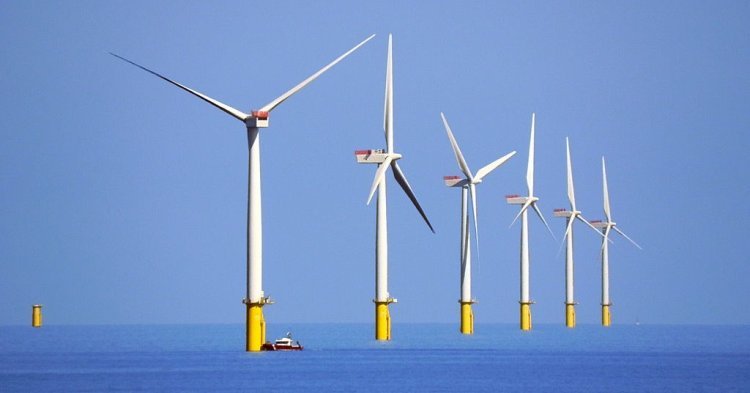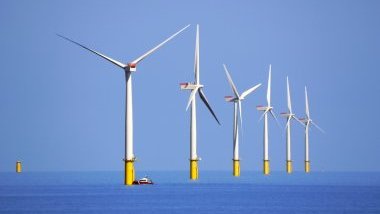The beginning of 2017 was marked by the publication of The 2nd Report on the State of the Energy by the European Commission, as well as negotiations between the European Parliament, the European Commission and Member States to reform the Emission Trading System – a system implemented to give incentive to industries to reduce their greenhouse emissions (ETS). [1] In light of these events, European media have almost unanimously blamed the EU for its lack of ambition in the energy field.
To be honest, the ETS has failed to achieve its goals. Politicians and Member States, faced with fierce battling amongst lobbies, have been unable (or unwilling?) to set up a system which would be truly restrictive toward polluting industries and boost investment in sustainable energies.
However, must we continuously focus on what has not worked as opposed to what has actually been successful? In doing so, we have a disregard for the European Commission’s pledge to make the EU a world leader in renewable energy by 2020.
Energy: A priority for the European Commission
In 2014, Jean-Claude Juncker was elected to the European Commission’s presidency. He presented ten priorities for the years to come, among which was an Energy Union built upon the 2030 Climate and Energy Framework adopted by the European Council in October 2014. [2]
This Union seeks to meet several goals: 1) Geopolitical: Reduce gas and oil imports, i.e. EU dependence with its neighbours, through diversification of energy sources. 2) Ethical: Fight global warming through developing renewable energy. Three targets have been set for the year 2030: A 40% cut in greenhouse gas emissions, at least 27% in energy savings, and at least a 27% share of renewable energy consumption. 3) Social: Guarantee affordable access to energy and create new jobs. 4) Economic: Boost growth, by encouraging companies to expand exports.
What financial tools are available to support this energy transition? The European Commission makes sure that at least 20% of the EU budget is climate-related, the objective being to reach 35% by 2020. Investors can also resort to the European Fund for Strategic Investments. The Commission wants 40% of this fund to be spent on projects which contribute to the fight against global warming. Finally, in the Connecting Europe Facility program, €5.35 billion has been earmarked for trans-European energy infrastructure projects, between 2014 and 2020. [3]
Promoting teamwork
The European Commission provides concrete tools, so that its strategy can be carried out thus encouraging international cooperation. The Energy Union is built upon resources and infrastructures pooling, as well as on network connection; in a nutshell, on an integrated internal energy market.
In the electricity sector, the European Council of October 2014 called for Member States to achieve interconnection of at least 10% of their electricity production by 2020. This means each State should have installed electricity cables that allow at least 10% of the electricity produced to be transferred to its neighbors. To what ends? In order to safeguard energy supplies, in case of power plant failures or outages during extreme weather conditions, as well as to increase levels of renewables – especially variable renewables like wind and solar. In order to reach its targets, the European Commission has drawn up a list of “infrastructure projects of common interest “, which benefit from improved regulatory conditions and, in some cases, from financial support from the EU. When such projects have been successfully completed by 2020, all the Member States (except for Spain and Cyprus) will achieve the 10% target.
This list also features several trans-European infrastructure projects in the gas sector. These plans aim to foster exchanges between Member States so that countries which depend the most on Russian gas can meet their needs via other supply channels. Thus, ambitious projects of gas transportation are being carried out in Eastern Europe: Balticonnector (Estonia and Finland), Gas interconnector Poland-Lithuania (which will also benefit Latvia and Estonia), Central and South-Eastern Europe European Gas Connectivity (involving nine countries).
An energy policy looking towards the future
The EU has been blamed for letting investment in renewables fall during the last five years. However, one must take into account the concurrent reduction of the installations cost. To cite an admirable example, solar modules prices dropped by 80% between 2009 and 2015. The EU has no reason to feel uncomfortable when it comes to development of renewables. Forty percent of the world patents in this sector are held by European companies. In addition, within the EU, the renewable energy sector currently employs more than 1 million people.
Renewables continue to progress, while leading to a greenhouse gas emissions decrease. The CO2 drop between 2014 and 2015 was estimated to be equivalent to the total level of Italy’s emissions in 2014. It should also be stressed that in 2016, 90% of new electricity production capacity came from renewable sources. For the first time, windfarms accounted for more than half of the infrastructures installed. The wind industry is sustained by the development of offshore windfarms, whose investments mainly go to the EU. The Gemini windfarm, located off the Netherlands’ coast, is currently the largest project. It will be the world’s second major offshore windfarm when completed at the end of the year.
The European Commission is determined to sustain its momentum. On 17 February 2017, the Member States agreed on the Commission’s proposal to invest €444 million in massive energy infrastructure projects, which are in tune with the key objectives of the Energy Union: Connect networks, strengthen supply safeguards and back sustainable development through integrating renewable sources. [4] Among them, worth mentioning is an innovative energy storage project in Northern Ireland which uses Compressed Air Energy Storage technology. In one word, all these projects are full of promise and could reshape the EU’s future in terms of energy. With such stakes, these advances are worth keeping an optimistic eye on.



Follow the comments: |
|
